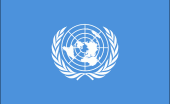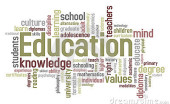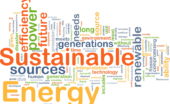Johannah Bernstein post: "eternally proud of my father’s extraordinary aeronautical engineering. legacy. here is a photo of the Canadair Water…
Water, Lakes and Rivers
Written by Diana Thebaud Nicholson // August 1, 2024 // Water // Comments Off on Water, Lakes and Rivers
The Global Commission on the Economics of Water (GCEW)
OECD Environment Directorate
Climate, Biodiversity and Water Division
UN-Water coordinates the United Nations’ work on water and sanitation.
There is no single United Nations Agency, Fund or Programme dedicated exclusively to water issues. In fact, over 30 United Nations organizations carry out water and sanitation programmes because these issues run through all of the United Nations’ main focus areas.
UN-Water is a ‘coordination mechanism’. It is comprised of United Nations entities (Members) and international organizations (Partners) working on water and sanitation issues.
Solving the freshwater crisis
(Quartz) Day after day, the world’s freshwater supply is drying up — and hydrating over eight billion people with less than 1% of the world’s water total supply is proving to be extremely difficult.
Water demand has risen by 40% over the past 40 years, and since 1970 the supply has been cut in half.
To make matters worse, infrastructure such as dams, pipes, and water treatment facilities are in poor condition — and only getting worse.
September 23, 2024
One Water Summit
The One Planet Summit for an international cooperation agenda on water
In the face of the imperative to raise this issue at the heads of State and government level, the President of the French Republic Emmanuel Macron and the President of the Republic of Kazakhstan Kassym-Jomart Tokayev announced at COP28 the organization of a “One Water Summit”, in the margin of the next high-level session of the 79th United Nations General Assembly.
…the aim of the summit is to act as an incubator for solutions, in preparation for the next UN Water Conference in 2026.
1 August
Groundwater plays an invisible role supporting lakes
(The Conversation) Nearly 90 per cent of North America’s lakes are located in Canada. That’s why they make up such an enormous part of our landscape. Among their many vital functions, lakes are essential to the biodiversity of our territory and constitute indispensable oases for rest and relaxation.
In the current context, where the climate is changing and humans are putting pressures on the environment in various ways, lakes play an essential role as “sentinels of change.” Since they react more quickly to environmental changes than the environments that surround them, lakes can serve as indicators, or even early warning systems.
Canadian lakes are threatened on many fronts. The threats range from eutrophication [a condition that occurs when lakes and reservoirs become overfertilized] and pollution to overpumping of the aquifers that feed them, to name just a few.
Because of the potentially devastating effects of these pressures, the way lakes react to these stresses, and in particular the role that groundwater plays in mediating these processes, has increasingly become the subject of multidisciplinary research.
6 July
Dam breach at China’s second-largest freshwater lake, 5700 residents relocated
Footage from state media showed a wave of water surging through a breach in the dike past several overturned lorries, into pools engulfing several house
4 July
New FAO digital ‘Compendium on drought impact and vulnerability’
The Food and Agriculture Organization of the united Nations (FAO) has unveiled a digital Compendium on drought impact and vulnerability to address the growing need for proactive drought management.
This user-friendly web-based tool aims to help countries transition from reactive to preventive approaches in dealing with drought.
24 May
Cities are running out of water and bracing for ‘Day Zero’
Cape Town, which beat a water crisis in 2018, holds lessons for cities grappling with an El Niño-fueled drought
(Quartz) In Mexico City, more and more residents are watching their taps go dry for hours a day. Even when water does flow, it often comes out dark brown and smells noxious. A former political leader is asking the public to “prioritize essential actions for survival” as the city’s key reservoirs run dry. Meanwhile, 2,000 miles south in the Colombian capital of Bogotá, reservoir levels are falling just as fast, and the city government has implemented rotating water shutoffs. The mayor has begged families to shower together and leave the city on weekends to cut down on water usage.
The measures come as a so-called heat dome sitting atop Mexico is shattering temperature records in Central America, and both Central and South America are wasting beneath a drought driven by the climate phenomenon known as El Niño, which periodically brings exceptionally dry weather to the Southern Hemisphere. Droughts in the region have grown more intense thanks to warmer winter temperatures and long-term aridification fueled by climate change. The present dry spell has shriveled river systems in Mexico and Colombia and lowered water levels in the reservoirs that supply their growing cities. Officials in both cities have warned that, in June, their water systems might reach a “Day Zero” in which they fail altogether unless residents cut usage.
14 May
A Milestone: The G7 Water Coalition
G7 Ministers reaffirm commitment to combat climate, pollution, and biodiversity crises by forming the “G7 Water Coalition”.
At the G7 meeting in Torino on 29-30 April, recognizing water’s pivotal role across these agendas, ministers established the “G7 Water Coalition.” This collaboration underscores water’s importance in sustainable development, prosperity, and peace. Building on the UN 2023 Water Conference and anticipating the One Water Summit, the coalition signifies high-level political priority for global water issues.
The coalition aims to align ambitions, maximize cooperation, and generate political momentum for water initiatives worldwide. After mainstreaming water across sectors and promoting best practices for SDG6, the coalition will report back in 2025, preceding NDC reviews and the 2026 UN Conference on Water. While specifics on addressing challenges remain unclear, the G7 Water Coalition presents an exciting opportunity to strengthen existing water actions while fostering new collective efforts.
12-13 March
Summary report 39th UN-Water Meeting
(IISD) The 39th UN-Water Meeting provided a platform for brainstorming how to implement the first-ever UN system-wide water and sanitation strategy. This strategy was called for in a September resolution by the UN General Assembly and follows up on the UN 2023 Water Conference
UN-Water was assigned the responsibility for developing the collaborative implementation plan for the strategy. Deliberations during UN-Water’s biennial meetings, which gather UN-Water Members and Partners to discuss how the UN can “deliver as one” in response to water- and sanitation-related challenges, will support this effort.
2023
UN 2023 Water Conference
22 — 24 Mar 2023, New York
In March 2023, the world will come together to address the urgent water crisis at the UN 2023 Water Conference in New York. Co-hosted by the Kingdom of the Netherlands and the Republic of Tajikistan, the Conference will be a global momentum for accelerated implementation and improved impact to advance the broad challenges surrounding water.
[It] is a once-in-a-generation opportunity to unite the world around solving the water and sanitation crisis.
National governments and stakeholders from all levels of society will come together to commit to action.
This Conference will launch the Water Action Agenda, which will include commitments from people around the world.
We need clear commitments, pledges and actions, across all our sectors, industries and interests, uniting nations, stakeholders and professionals on actions that help deliver on the water actions in the 2030 Agenda for Sustainable Development, actions that can be scaled and replicated in the years to come. Such commitments will be compiled in the Water Action Agenda, another key outcome of the Conference. The emphasis should be on accelerated implementation and improved impact towards achieving SDG 6 and other water-related goals and targets, looking at content, process and structure. The existing and future challenges in the field of water require innovative and transformative ideas and a “beyond business as usual” approach.
26 July
Transboundary Cooperation, Special Envoy on Water Considered at HLPF Event
To follow up on the discussions during the UN 2023 Water Conference, many government representatives supported convening regular intergovernmental meetings on water, appointing a Special UN Envoy on water, and developing a UN system-wide strategy on water.
Youth participants highlighted ways to foster the role of youth in delivering SDG 6, including by treating youth inclusion as a cross-cutting issue and not a stand-alone issue, and creating a youth water envoy.
The full-day event, which was addressed by over 50 high-level panelists, took place on 17 July 2023 at UN Headquarters in New York, US. [ENB Coverage of SDG 6 and Water Action Agenda Special Event]
22 March
UN warns of ‘draining humanity’s lifeblood’ amid worsening water scarcity
Secretary general urges countries to tackle ‘vampiric overconsumption’, water guzzling industries and climate crisis
Nina Lakhani
(The Guardian) The United Nations opened its first water conference in almost half a century in New York on Wednesday, with a plea for countries to work together to tackle overconsumption, water guzzling industries and the climate crisis – or else face more hunger, conflicts and forced migration due to worsening water scarcity.
A quarter of the world’s population still does not have access to safe drinking water while half lacks basic sanitation, and despite some progress in recent years, the climate crisis is making the situation worse.
“We are draining humanity’s lifeblood through vampiric overconsumption and unsustainable use, and evaporating it through global heating,” said UN secretary general António Guterres. “Governments must develop and implement plans that ensure equitable water access for all people while conserving this precious resource.”
WORLD WATER DAY 2023 – ACCELERATING CHANGE
Dysfunction throughout the water cycle is undermining progress on all major global issues, from health to hunger, gender equality to jobs, education to industry, disasters to peace.
Right now, we are seriously off-track. Billions of people and countless schools, businesses, healthcare centres, farms and factories are being held back because their human rights to water and sanitation have not yet been fulfilled.
Two billion people don’t have clean drinking water, UN report says
(Euro News with AFP) Today is World Water Day, an annual event that aims to highlight the problems millions of people around the world have in accessing clean, safe drinking water.
The United Nations children’s agency UNICEF says that on the continent of Africa alone, 190 million children in ten countries are at the highest risk from a convergence of three water-related threats – inadequate water, sanitation, and hygiene-related diseases.
The triple threat was found to be most acute in Benin, Burkina Faso, Cameroon, Chad, Côte d’Ivoire, Guinea, Mali, Niger, Nigeria, and Somalia.
But the problem is not limited to Africa. Who would have thought Hong Kong had a ‘hidden’ water problem – a false sense of security breeding unsustainable habits
“The lack of a visible and salient problem when it comes to water is where the city’s problem lies,” write Dr Lina Vyas and Dr Stuti Rawat on World Water Day.
‘The hydropower goldrush’: how Europe’s first wild river national park saw off the dams
‘The hydropower goldrush’: how Europe’s first wild river national park saw off the dams
The Vjosa River in Albania teems with more than 1,000 species, while rare vultures and Balkan lynx visit its banks. It has seen off the threat of a surge in barriers, but the shadow of development persists
A collaboration between the government, international experts, STBHE, NGOs, the International Union for Conservation of Nature (IUCN) and Patagonia, the outdoor clothing company and environmental organisation, will help ensure the Vjosa and its unique ecosystems across the 12,727-hectare (31,500-acre) park are safeguarded. The park has been given an IUCN category II designation aimed at protecting it from dams, gravel extraction and other damaging activities….At one point, there were 45 dams proposed on the Vjosa, eight on the main river and 37 on its tributaries.
While the Vjosa supports a myriad of wildlife, including otters, critically endangered Balkan lynx and endangered Egyptian vultures, the key to its biodiversity lies under the water. In the gravel, mussels work away in the dark, filtering the river water, allowing fish to spawn and breed.
21 March
Imminent risk of a global water crisis (UNESCO/UN-Water)
Between two and three billion people worldwide experience water shortages. These shortages will worsen in the coming decades, especially in cities, if international cooperation in this area is not boosted, warn UNESCO and UN-Water in the latest edition of the UN World Water Development Report.
20 March
Waking Up to the World’s Water Crisis
Quentin Grafton , Joyeeta Gupta, and Aromar Revi
The forced shutdown of nuclear reactors in France, the heavy snowfall that covered large swaths of North America in December, and the recent cholera outbreak in Lebanon are all symptoms of a mounting global water crisis. The UN 2023 Water Conference offers an opportunity to start dealing seriously with the issue.
(Project Syndicate) The world is becoming accustomed to the drip-drip of catastrophic headlines following each new climate-driven disaster. Increasingly frequent and severe heatwaves are causing wildfires in California and widespread coral die-offs in Australia. Unprecedented floods have wreaked havoc in Pakistan, Germany, China, and New Zealand. Drought in the Horn of Africa is causing famine for millions. And this list could go on.
Yet water remains mostly absent from global discussions. While concerns about the geopolitical order, climate change, and the COVID-19 pandemic have understandably been in the spotlight, water is rarely discussed outside the context of humanitarian responses to local, national, or transboundary floods or droughts. This is a major blind spot: In the World Economic Forum’s 2023 Global Risks Report, nine of the ten biggest risks for the next decade have a water-related component.
As the lead experts at the Global Commission on the Economics of Water, we see three areas that require transformation. First, we must consider the entire water cycle and how it is connected with biodiversity, the climate, human well-being, and ecosystem health – all key factors in socioeconomic and ecological prosperity. That means “connecting the dots” and promoting resilient relationships between water and food, water and energy, and water and the environment. Second, water and the water cycle must be governed as global common goods. The ongoing proliferation of water crises calls for a new economic framework based on a systems approach to the water cycle, societies, and economies.
Moreover, an inclusive interdisciplinary framework – with a portfolio of new instruments and metrics – is needed to manage the systemic risks associated with the water cycle and its alteration by humans. Creating such a framework must begin by acknowledging water’s central role in driving economic, sociocultural, and environmental change. Lastly, we must bring everyone into the decision-making process – starting with marginalized communities – to develop new strategies for properly valuing water.
15 March
How technology can help address the world’s water security crises
Climate change is negatively impacting the global freshwater supply.
As our changing climate puts more stress on the availability and quality of water worldwide, we must focus on innovative solutions for improving water security.
The public and private sectors must come together to harness the power of technology to improve global water security.
(WEF) Water insecurity is a growing bio-diversity challenge. We must address the problem and arrive at immediate and innovative solutions. While technological innovation shapes nearly every other aspect of our lives, we’ve been slow to apply tech solutions towards one of the greatest challenges of our time.
As our changing climate puts more stress on the availability and quality of water worldwide, we urgently need a shift in perspective that puts renewed focus on innovative solutions to water security. We must bring together individuals and institutions that can create a more enabling ecosystem, with an emphasis on technology and innovation to drive sustainable change with regard to freshwater conservation.


